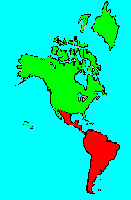SPECIES INFO
Olivaceous woodcreeper (Sittasomus griseicapillus) is found from southern Mexico including highlands as far north as Tamaulipas and Jalisco and then south through most of Central and South America to as far south as Bolivia and northern Argentina. The northern forms of this small just over 6 inch species have a gray head and breast. The dorsal wings and back are reddish brown.
Howard and Moore in 2003 listed 20 different subspecies. We list the 4 northern ones. The north east Mexican subspecies is S. griseicapillus harrisoni. The western subspecies jaliscensis is found in Jalisco. The subspecies sylvioides is found from southern Mexico to Costa Rica. The subspecies gracileus is local in the Yucatan and Belize.
The nominate subspecies named in 1818 by Vieillot is found in western Brazil, southern Bolivia, western Paraguay, and northwestern Argentina.The woodcreeper group (Dendrocolaptidae) contains about 50 species. They are only found in the New World tropics. Many species are reddish brown dorsally with brownish breasts marked with white or darker brown patterns. Most are about 7 to 12 inches in length. These birds climb on trees suggesting woodpecker lifestyles.
The ovenbird group (Furnarioidea super family) contained 279 species in Monroe-Sibley in 1993. Howard and Moore in 2003 counted 286 species. However, in 2007 Clements has counted 294 species. This group is found primarily in tropical America.
This large super family contains birds with common names such as canastero, cinclodes, earthcreeper, foliage cleaner, miner, spinetail, thistletail, and thornbird, treerunner, and woodcreeper. Most are small brownish birds between 5 and 8 inches in length. (The strong bill woodcreeper can reach over 11 inches.)
We have placed the families Furnariidae with 236 species (Ovenbirds), and Dendrocolaptidae with 50 species (Woodcreepers) in this larger group.
The taxonomists are not sure yet of the placement of these families, and our choice herein hopefully will let the user navigate this group.
In most modern bird taxonomies, the perching birds (Passeriformes) is treated as a single order. This large order has about 5739 different species. A common characteristic of this order is three forward toes and one reverse pointing toe. Most of species are also characterized by a tendon locking mechanism that permits their feet to lock onto branches when they relax. Recently, Monroe and Sibley in 1993 have divided this large order into six main divisions. To help our users navigate this gigantic number of species, we have arbitrarily placed these 6 different divisions at the order level.
This division can be referred to as:
Order Passeriformes (5739 species)
Suborder Tyranni (1159 species)
Infraorder Tyrannides (1105 species)
Aves contains about 8,650 different species of living birds known to science. Each year about one new species is discovered in some remote rain forest or remote island. In addition, scientists have been raising many subspecies to full species status which may raise the species count to 10,000. Birdlife recognizes 10,027 species as of 2011.
However, each year about one species goes extinct. The rate of extinction is increasing, and the rate of new discovery is decreasing, so that the number of bird species will soon begin to decline rapidly. Although different taxonomists would organize the birds differently, there are approximately twenty-seven orders of birds. These orders are broken down into about one hundred and fifty-five different families.
Recent research of the genetic structure of some of the shore birds and owls would indicate that the present organization of orders and families should have some modification.
The birds are a worldwide group of animals that are characterized by having the front limbs modified into wings that are used for flying. Perhaps the most unique feature of the birds is the feathers. These feathers are made up of a central support called a quill and a series of small filaments that are hooked together as barbs.
For many years it was believed that Archaeopteryx discovered in Bavaria was the oldest bird from about 150 million years ago. However, in l986, Sankar Chattterjee, a Texas paleontologist, reportedly discovered a bird in the genus Protoavis that lived about 225 million years ago.
When this project was begun in 1978, we used Austin & Singer for bird taxonomy. Since then, we have adopted many changes, but have kept some older concepts that are still found widely in the literature. Recently, we have used Clements and Howard & Moore. Very recently, we have used Monroe and Sibley for the higher taxonomy of the perching birds.
Backboned Animals (Phylum Chordata) are the most advanced group of animals on earth. These animals are characterized by having a spinal cord or backbone. Most members have a clearly defined brain that controls the organism through a spinal cord. Fish, amphibians, reptiles, birds, and mammals are in this phylum.
Currently, some taxonomists believe that the fish should be divided into two groups (sharks and regular fishes) and that there are some other primitive groups in the phylum such as hagfish or lampreys.
Animal Kingdom contains numerous organisms that feed on other animals or plants. Included in the animal kingdom are the lower marine invertebrates such as sponges and corals, the jointed legged animals such as insects and spiders, and the backboned animals such as fish, amphibians, reptiles, birds, and mammals.

